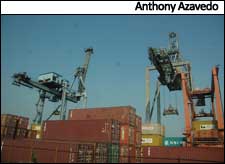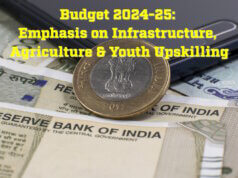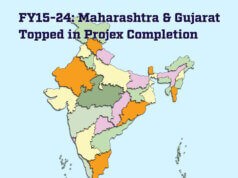 There is high growth potential in material handling industry in India considering the pipeline of opportunities in nearly all sectors of the economy, says Bhushan S. Kudale, Marketing Leader – Material Handling SBU, Ingersoll Rand India.
There is high growth potential in material handling industry in India considering the pipeline of opportunities in nearly all sectors of the economy, says Bhushan S. Kudale, Marketing Leader – Material Handling SBU, Ingersoll Rand India.
It wouldn’t be an exaggeration to say that MHE (material handling equipment) is the arteries and veins of any industry. All industry segments right from mining to construction, oil and gas to power generation, metals to automotive manufacturing, warehousing and logistics, F&B, pharma and electronics rely on MHE for movement of material. MHE adds value to the manufacturing process by enhancing the working conditions, making them safer and less stressful for the users in turn making industries more efficient and productive in the work being accomplished.
A 2011 study by Freedonia forecasted the global demand for material handling products to climb 4 per cent annually through 2016 to $123.6 billion. Among the growing national markets, India and China were forecasted to see the fastest gains. But three years since this study was released, the Indian economy is still emerging from the clutches of a drastic slowdown ever. The HSBC Manufacturing PMI decelerated to 50.7 in December 2013, from 51.3 in November 2013. Execution delays associated with many infrastructure projects coupled with downturn in automotive sector has created concerns for steel manufacturers and other dependent industries. Capital goods purchase for greenfield projects and capacity expansion is being deferred and since most MHE falls into the capital spend category, MHE manufacturers are feeling the pinch.
The project pipeline, though, seems strong. Oil and gas exploration is on the rise. This is driving demand for MHE such as air winches and hoists which are considered safe for utility and personnel lifting applications and BOP handling applications on onshore and offshore oil rigs. The rising imports are testing the capacity limits of our ports and harbours. The Ministry of Shipping is considering about 30 projects for capacity expansion of ports and harbours. With vast number of projects in pipeline for power generation, steel, cement and mining, there exists an enormous potential demand for unit load handling equipment such as high capacity cranes, hoists, winches and for bulk material handling solutions in near future.
Flexibility
In manufacturing context, the industries are expecting their MHE suppliers to play a key role in providing solutions that can help make their operations flexible and productive with minimum investment in the short run.
Flexibility is the key since the plant infrastructure will have to be realigned if the demand withers further or takes off. At least currently, the trend is for MHE that meets the minimal operational criteria while complying with safety norms and providing benefits in terms of productivity improvements. This will help improve the cash flow for the cash strapped industries.
Material handling operations are being outsourced to 3PL providers. Though rental equipment isn’t a new concept, industries are taking this concept further by outsourcing the operation, maintenance and required skilled labour for operation, to 3PL providers. Increasingly for material handling equipment suppliers, 3PL contractors are becoming a key target group.
Customers are looking towards MHE suppliers to provide them complete end-to-end solutions for their load manipulation needs, rather than having to deal with multiple suppliers providing standalone products. Manufacturers with complete solutionising capabilities and line integrators are gathering importance in this context. The key for solution providers is to develop standard sub system modules that could be configured in multiple ways so as to meet every customer’s specific need. Standardisation within the customisation business will be the mantra to cost effectiveness and success.
According to EY’s 2014 India Attractiveness Survey, with 5.5 per cent of the global FDI still coming India’s way, there will be increased rate of industrialisation. More foreign manufacturers are venturing into Indian market to carve out their share of this lucrative market. The effects are visible in both demand and supply side of MHE. Indian subsidiaries of the international players are looking for similar material handling solutions that have been successfully deployed back in parent plants.
 Strategic alliances
Strategic alliances
Specifications for MHE at new Indian operations are driven by parent locations thus driving demand for more intelligent and sophisticated products in India. On the supply side, foreign manufacturers are forming strategic alliances with domestic market players and driving the incorporation of electronic intelligence into material handling equipment. The only hindrance is the lack of mass acceptance of these sophisticated and intelligent products in Indian markets, which in turn drives up the cost of the ownership. Though all industry sectors value the sophistication, appreciable premium is hard to be realised. One of the reasons for this behaviour is the easy availability of manual labour to do the job. However, the future of MHE in India looks promising as MHE manufacturers scramble to reduce the cost of ownership through local manufacturing and developing innovative products with ability to deliver greater value over the total lifecycle of the equipment.
As global best practices come to India, businesses are getting increasingly conscious about the health and safety of their workforce. Demand for ergonomic handling solutions and power assisted load manipulation devices would increase in the future as manufacturing industry tackles the issue of workforce safety and productivity head on. The automotive sector is already a heavy user of such ergonomic handling equipment, but the trend is now spreading to the ancillaries and other manufacturing industries.
R&D teams at Ingersoll Rand, a pioneer in ergonomic handling systems, have developed mathematical models for estimating human efforts to operate the overhead and floor mounted load manipulating systems. This will help build the required ergonomics into the MHE right in the design stage.
Sustainability is also garnering increasing attention by Indian industries. With a goal to minimise the impact on environment, the manufacturing industry will prefer MHE that is energy efficient and free of hazardous materials. With continuous developments happening in the area of energy efficient electrical and pneumatic drive systems, the cost of running the powered MHE is coming down thus conserving energy. Materials such as mercury, lead and asbestos known to have hazardous effects are already restricted from usage in products and manufacturing processes in the developed world. This trend has already come to India with companies like Ingersoll Rand ensuring none of their products contains such hazardous materials.
To sum up, there is high growth potential in material handling industry considering the pipeline of opportunities in nearly all sectors of the economy. The MHE manufacturers will have to rise to the challenge by helping their customers in the short term from flexible solutions standpoint. In the long run they will need to continue investing in development of modular solutions that will meet customisation requirements, deliver productivity and ensure safety at work while delivering energy efficiency and meeting sustainability goals.











